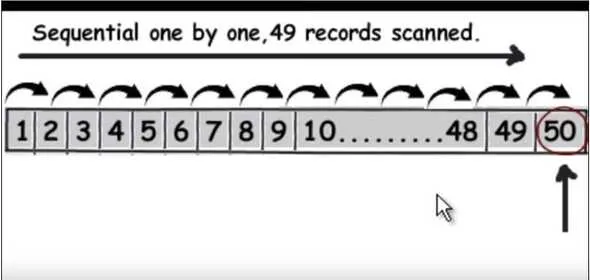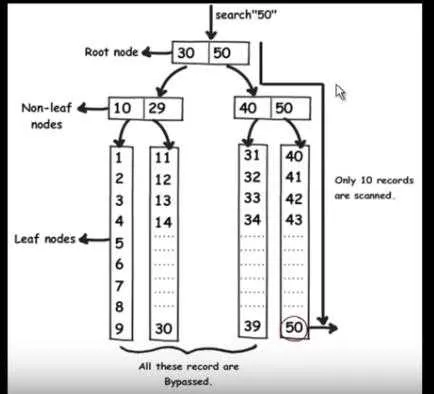What is Indexing?
Supposedly, we have a piece with information of about 10,000 lines. We may not want to store as much all at once, so we decide to store it in 10 books of 1000 pages each. This analogy is quite similar to files being stored in blocks on the disk and records being contained in each block. Now, we have to access a record in the block, and it may happen that there are numerous blocks but we want to access the information of just one particular block. This may turn out to be a slow process, and we really want to fasten it up. There may be a case that the block we want to search may or may not be sorted. If sorted, we may apply the binary search and access the record which will definitely take some time. But what if the file is unsorted? In that case, we have to access all the records to get that file.

Thus, to make this search faster, we can decrease the access time to search a record we use indexing.
Indexes are all about finding data quickly.
Indexes in a database are analogous to indexes that you find in a book. If a book has an index, and I ask you to find a chapter in that book, you can quickly find it with the help of the index. On the other hand, if the book does not have an index, you will have to spend more time looking for the chapter, running through every page. In a similar fashion, indexes in a database can help queries to find data quickly.
Indexing is a way to optimize the performance of a database by minimizing the number of disk accesses required when a query is processed. An index or database index is a data structure that is used to quickly locate and access the data in a database table.
Ways to perform Indexing
We use an index table that has two fields: the search key( Anchor) and the Block Pointer(Reference Pointers). The analogy is the index that is present at the end of the book with the word and pages mentioned there. The search key is similar to the words in the dictionary and the block pointer is similar to the page number which is pointing to the occurrence of that word in the book. So the book pointer points to the base address of the block where the search string is present. In Fig.1 supposedly, the query is to find the 50th record , it will have to read 49 records as a linear search. When we apply indexing, the query will quickly find the data without reading each one of them just by eliminating half of the data in each traversal like a binary search. The MySql indexes are stored as B-tree where all the data are in the leaf node.

Types of Indexing
The indexing can be classified into two types:
- Single-level indexing
- Multi-level indexing
Single-level indexing
The single level indexing implies that the indexing is done only once. This means the index table is created once. The single level indexing can be classified into 4 types:
a) Primary Indexing
The primary indexing is done when the main file for which the index table is created is a sorted file.
The anchor used in the primary indexing is the primary key of the main table.
This can further be classified into two types:
- Sparse indexing: The index record appears only for a few items in the data file. Each item points to a block as shown. To locate a record, we find the index record with the largest search key value less than or equal to the search key value we are looking for. We start at that record pointed to by the index record, and proceed along the pointers in the file (that is, sequentially) until we find the desired record.
- Dense indexing: For every search key value in the data file, there is an index record. This record contains the search key and also a reference to the first data record with that search key value.
b) Secondary Indexing
The secondary indexing is done on an unsorted main file. Here the anchor may be a key value or non-key value. This means it can be unique or not.
c) Clustering Indexing
It is done on the sorted main file but the anchor value is a non-key value
d) Ordered Indexing
The indices are usually sorted so that the search is faster. The indices which are sorted are known as ordered indices.
Multi-level indexing
When the index table is created for some other index table, this type of indexing is called multi-level indexing.
The types of indexing are shown in the Fig.3 below:

Advantages of indexes
- Useful in finding data quickly
- Results in much better performance
- Unique records
Disadvantages of indexes
- Additional disk space
- Insert update delete statement can become slow
- If there exists a covering query then there is no need to look in the table
- A clustered index always covers a query





%201.webp)

